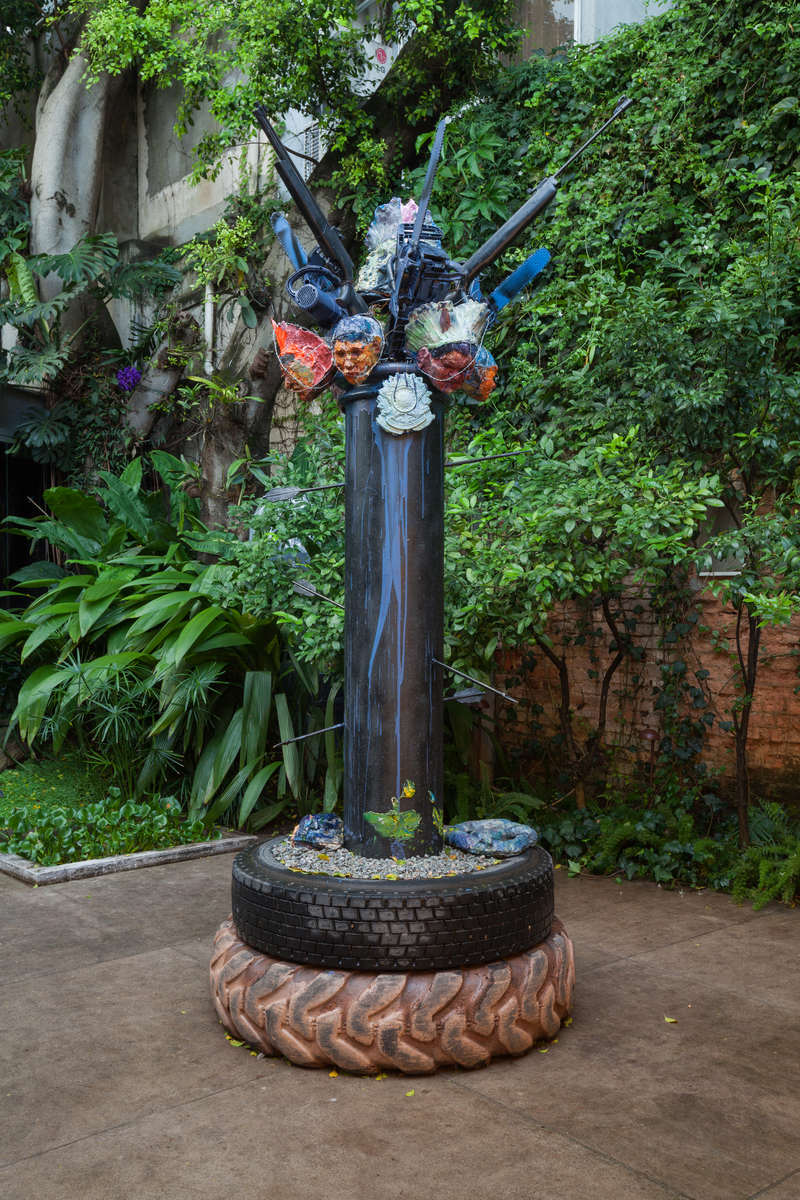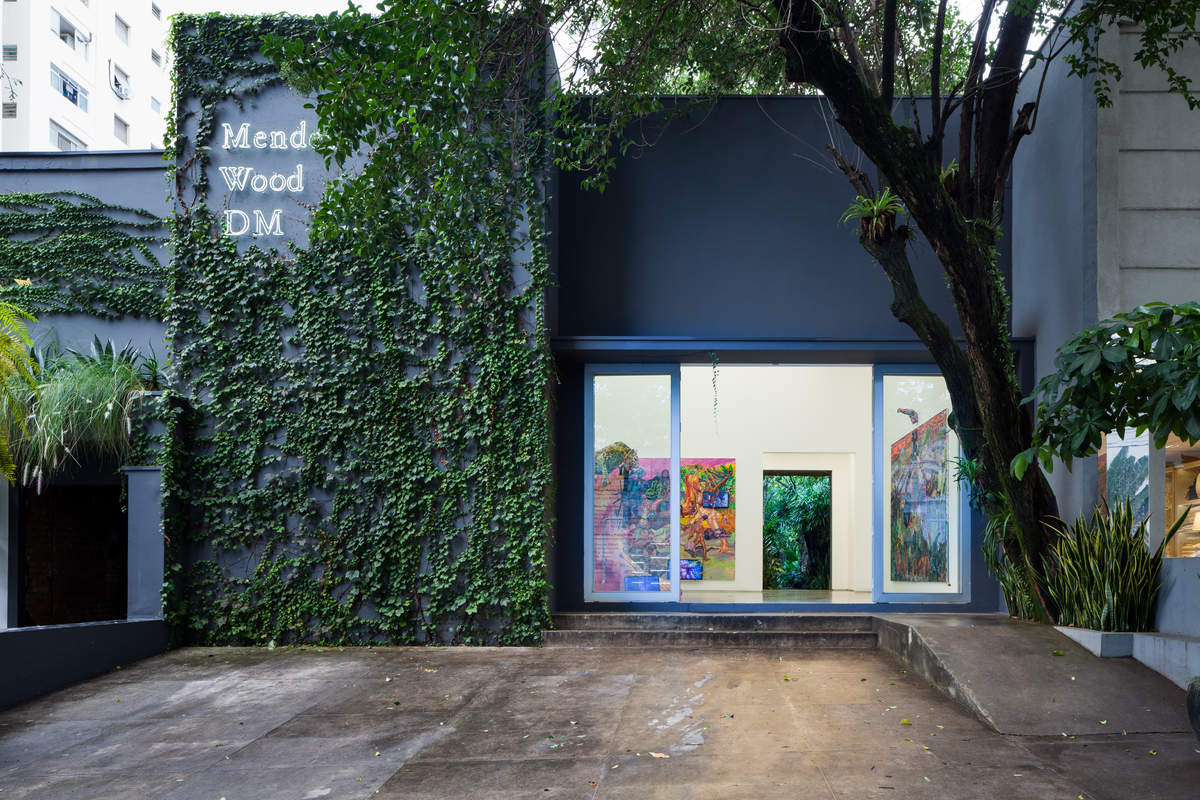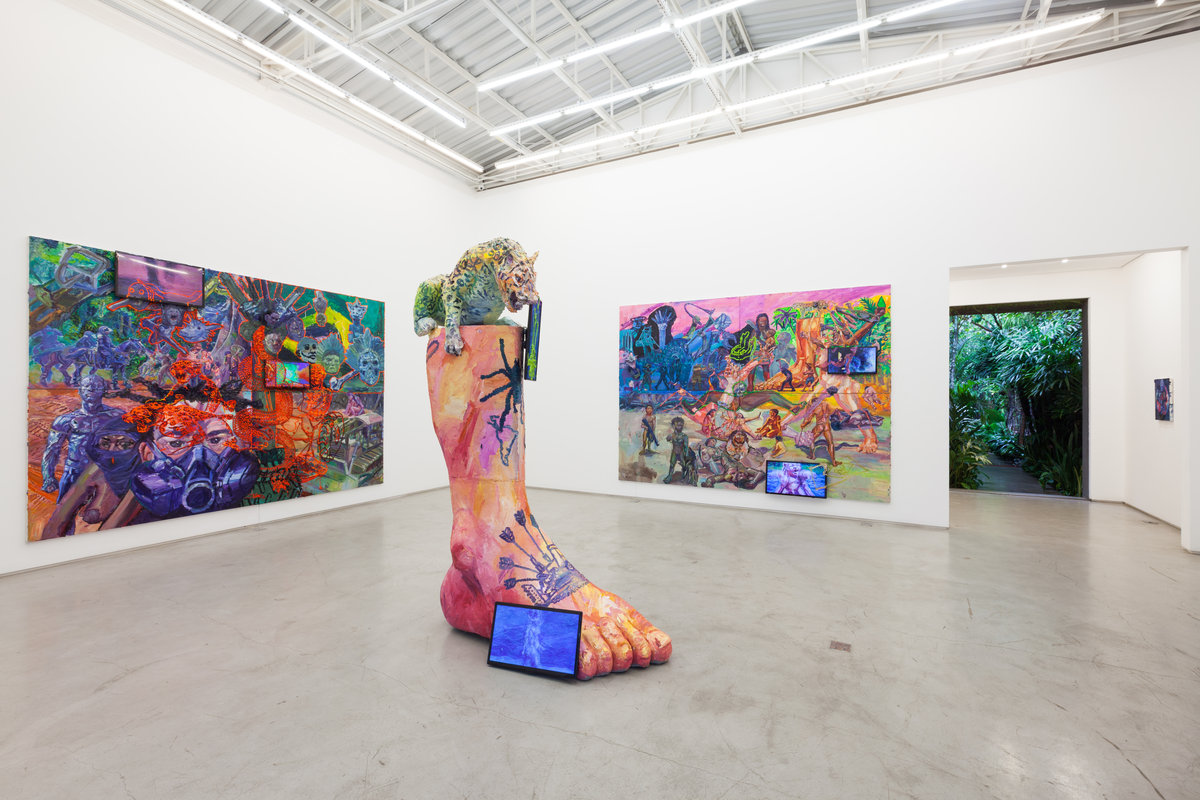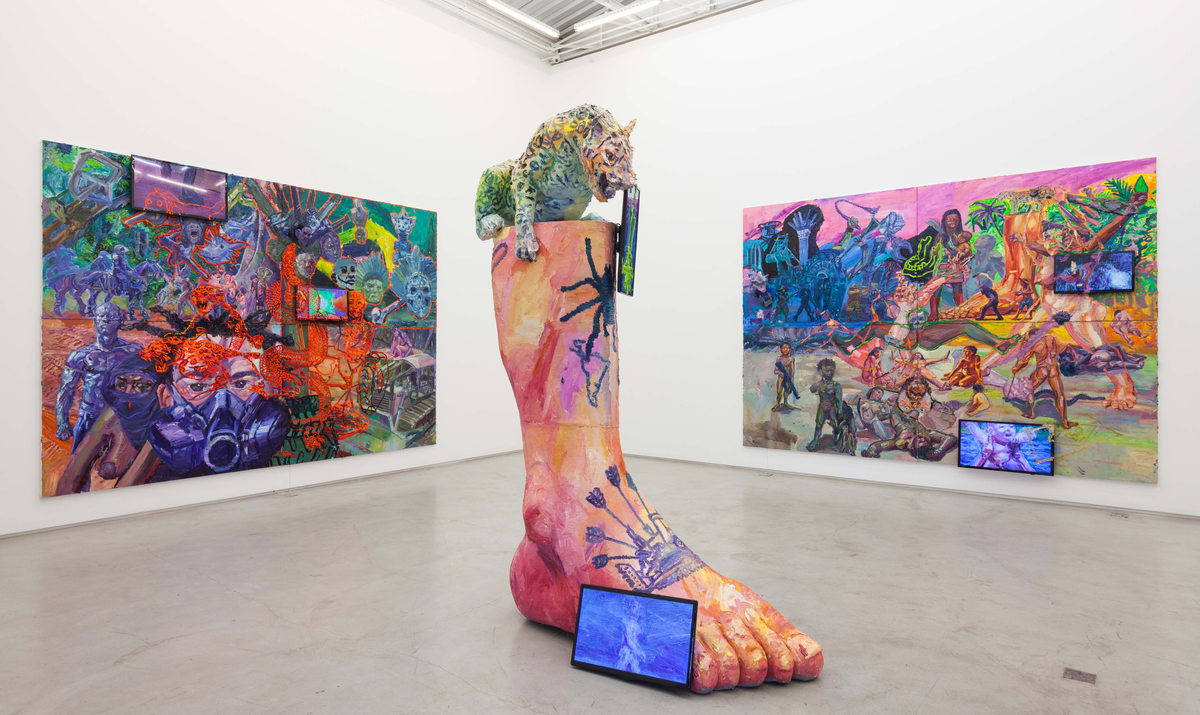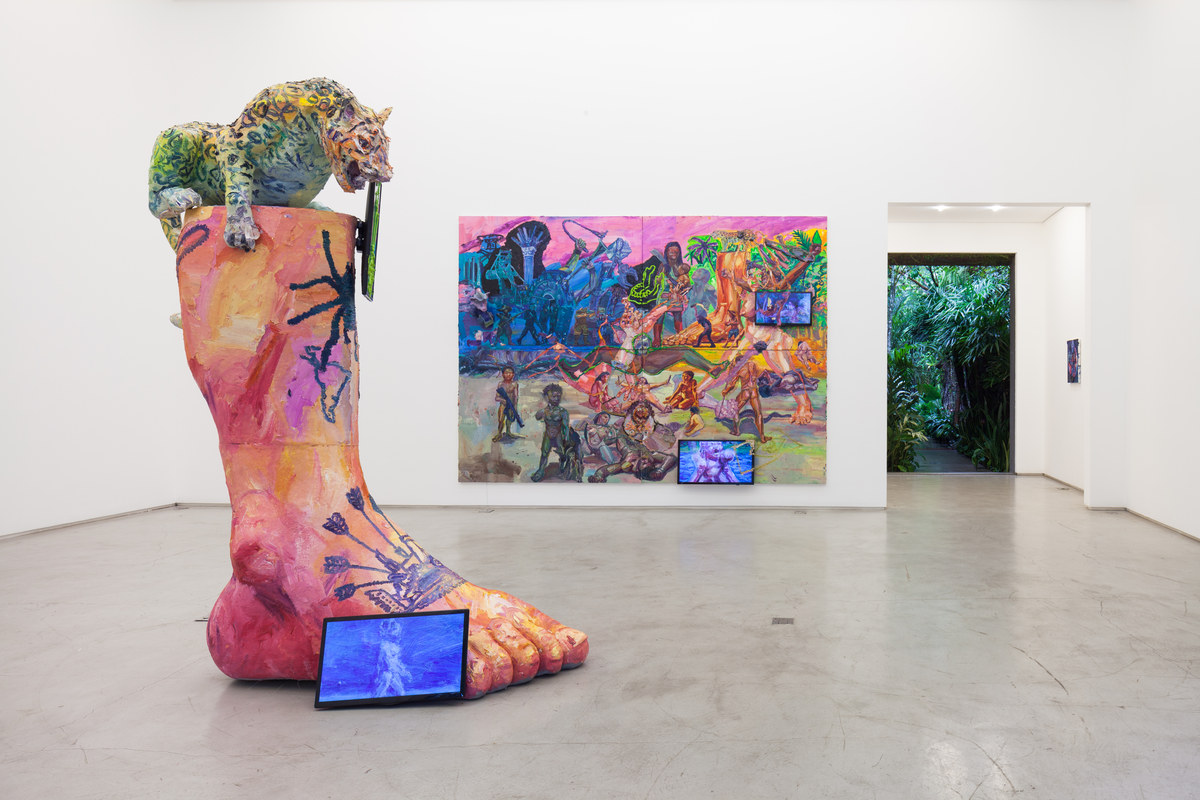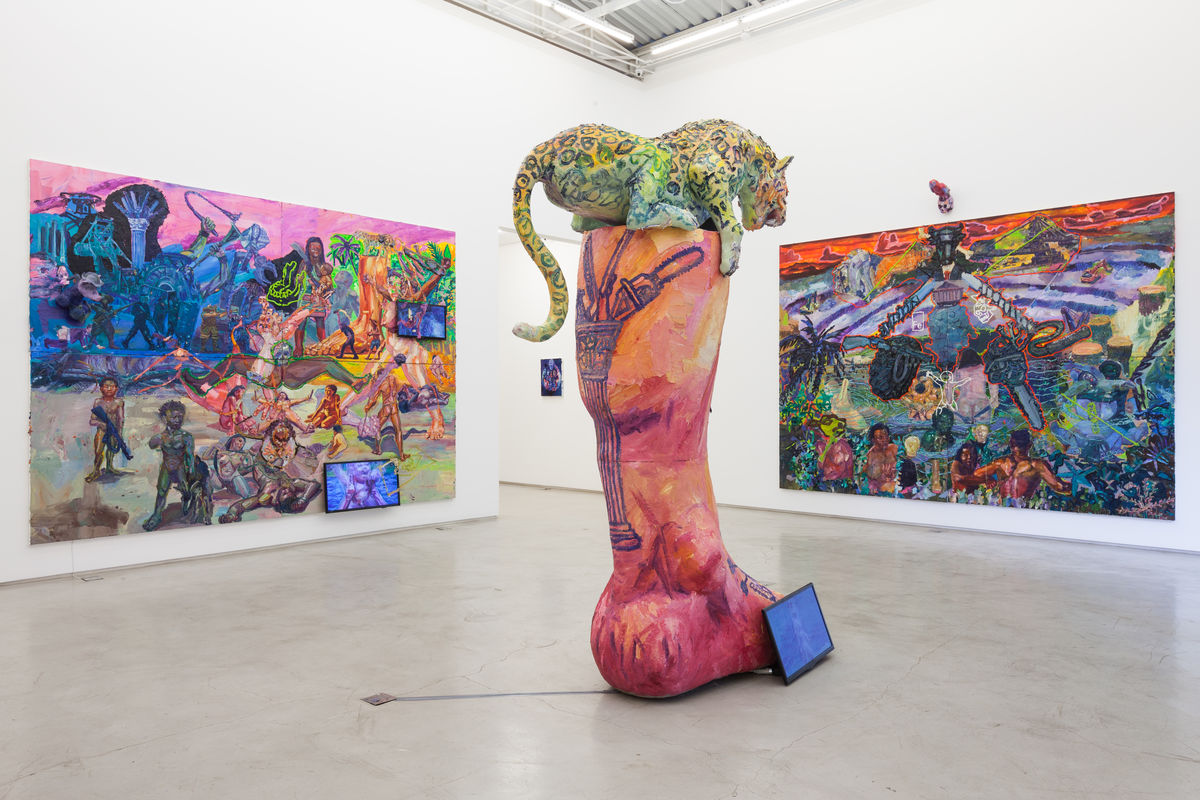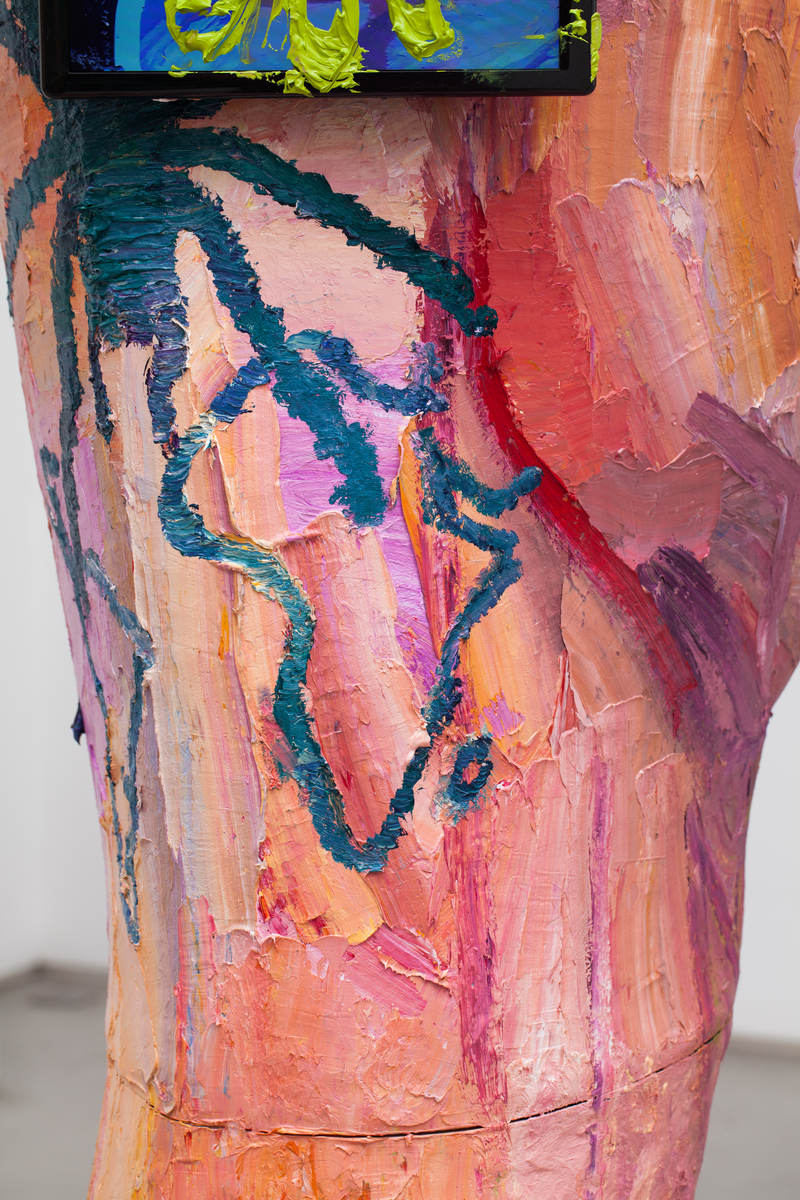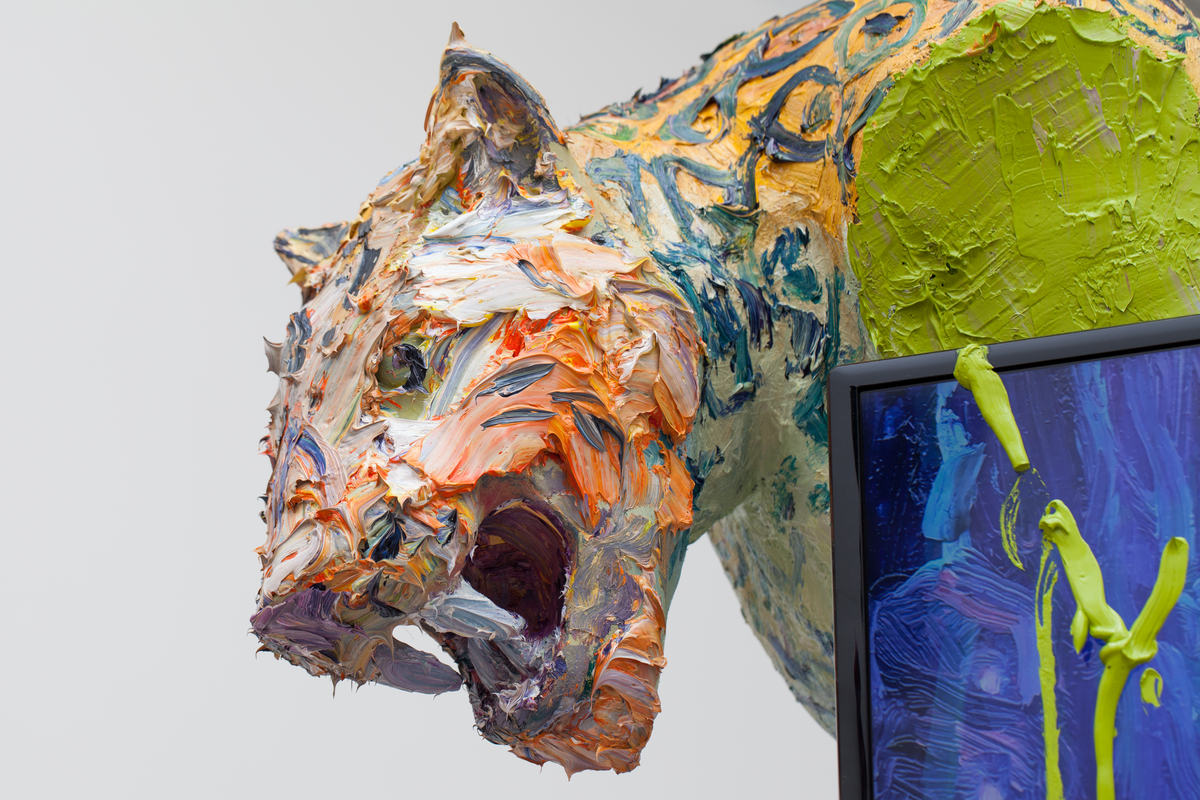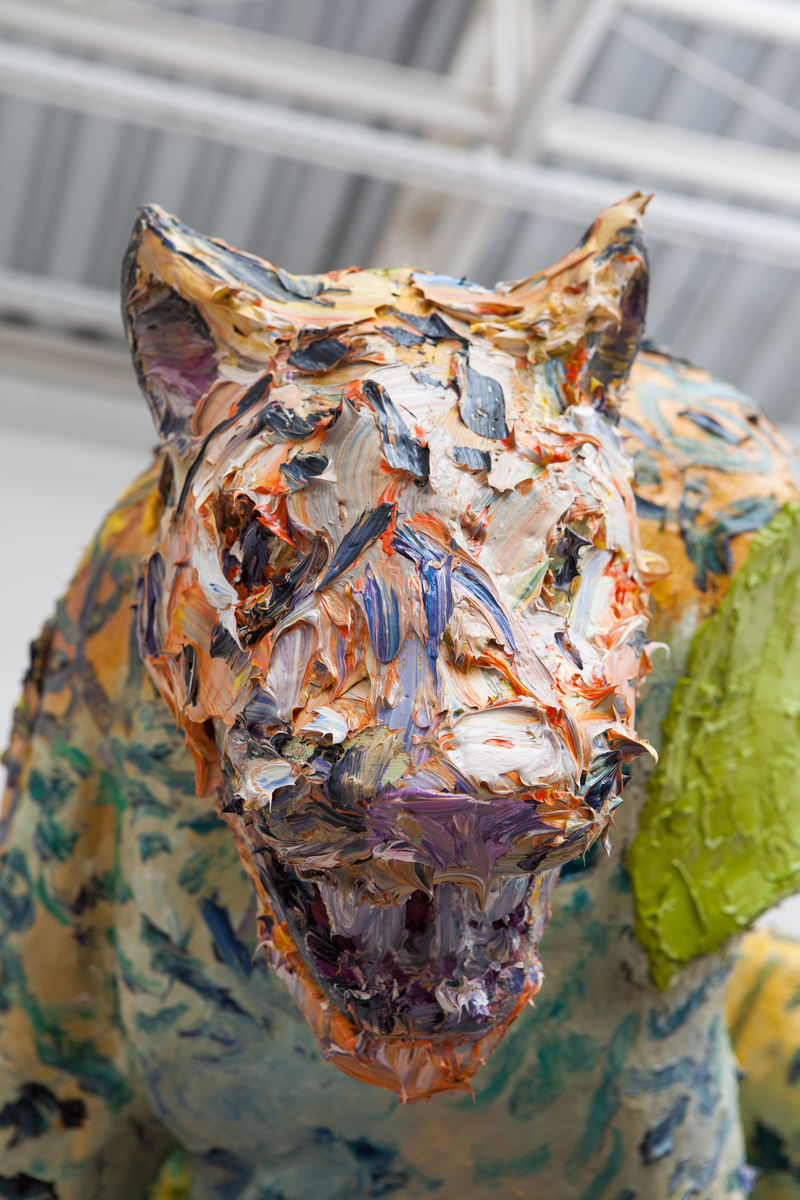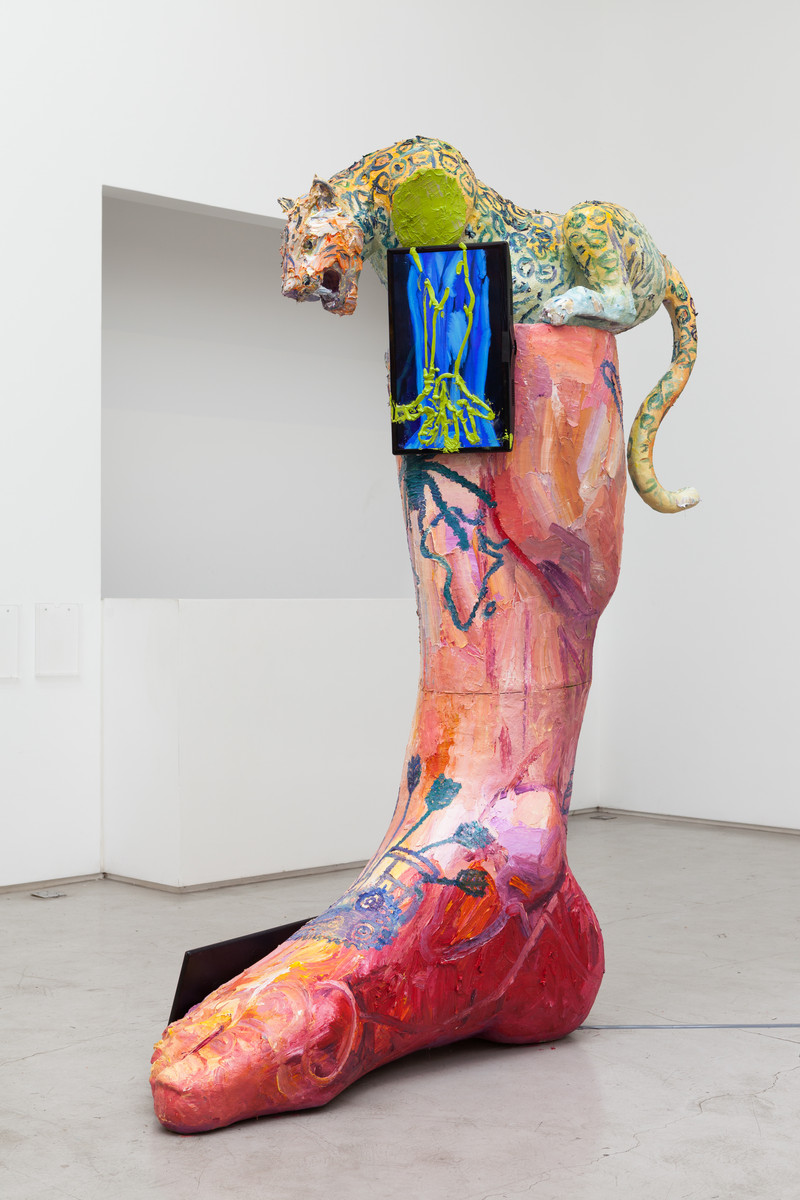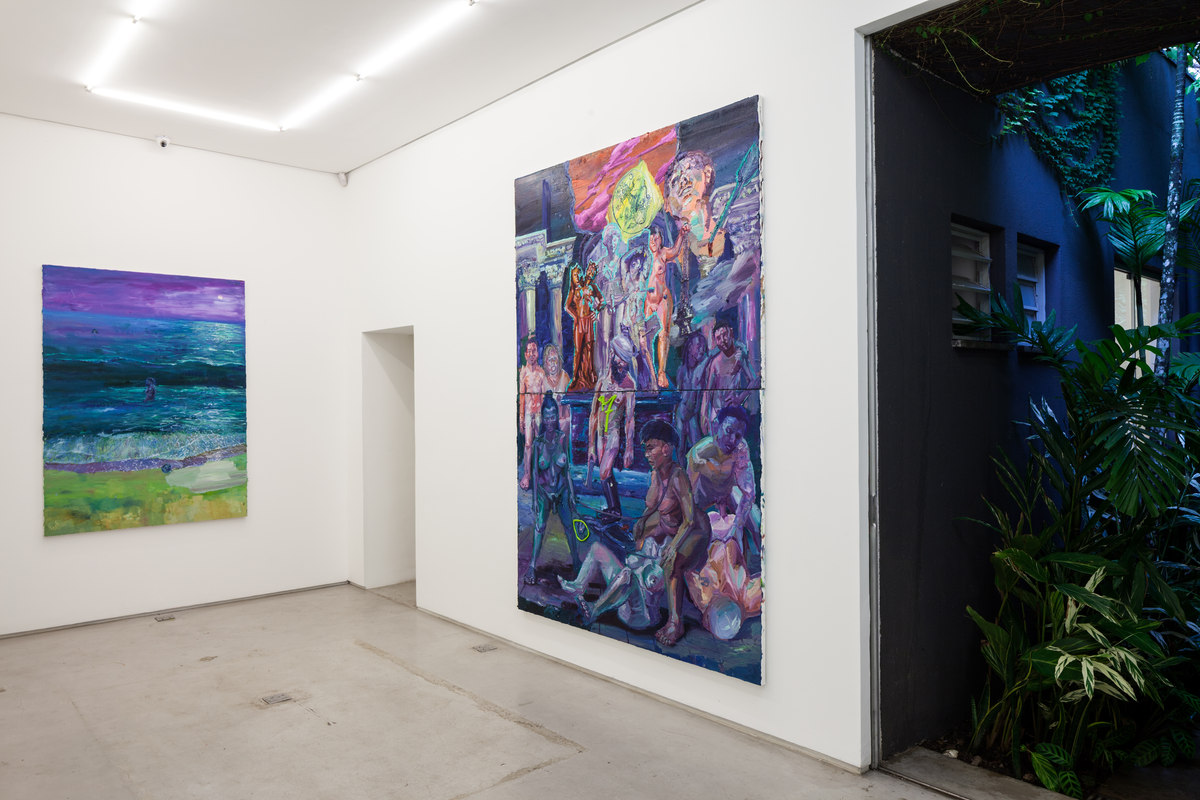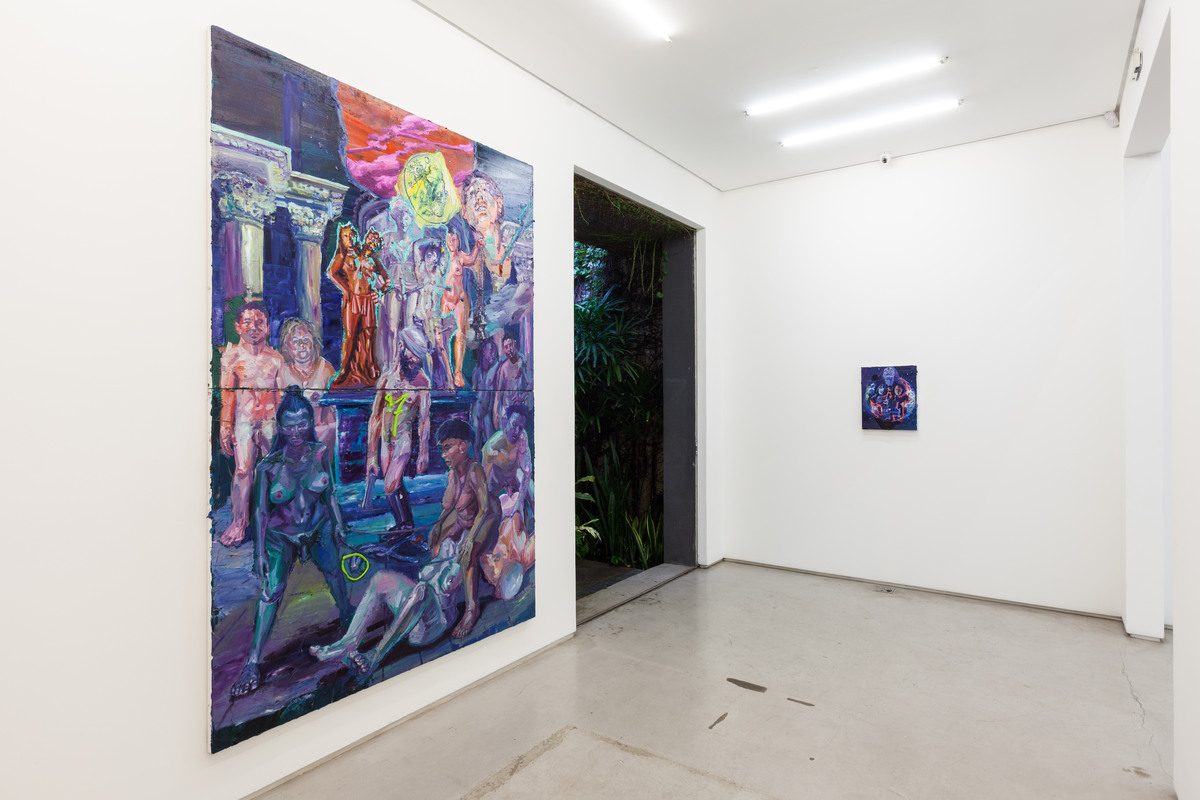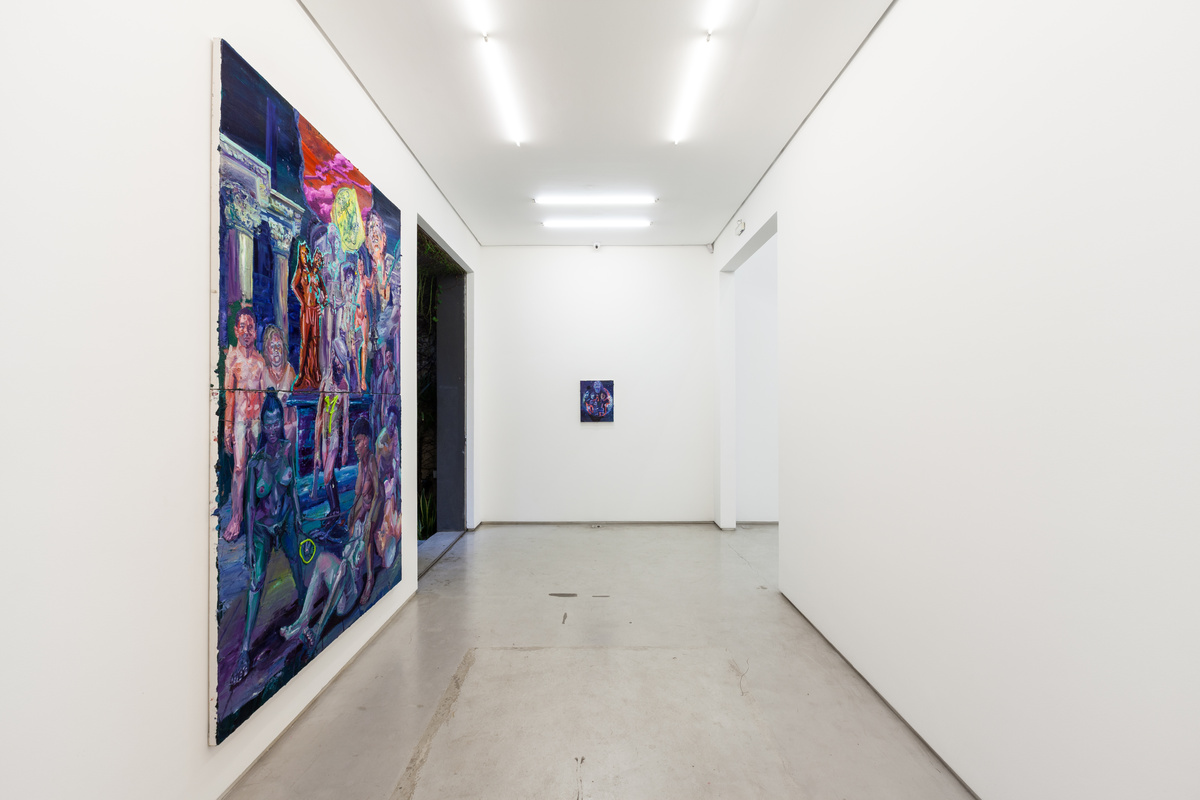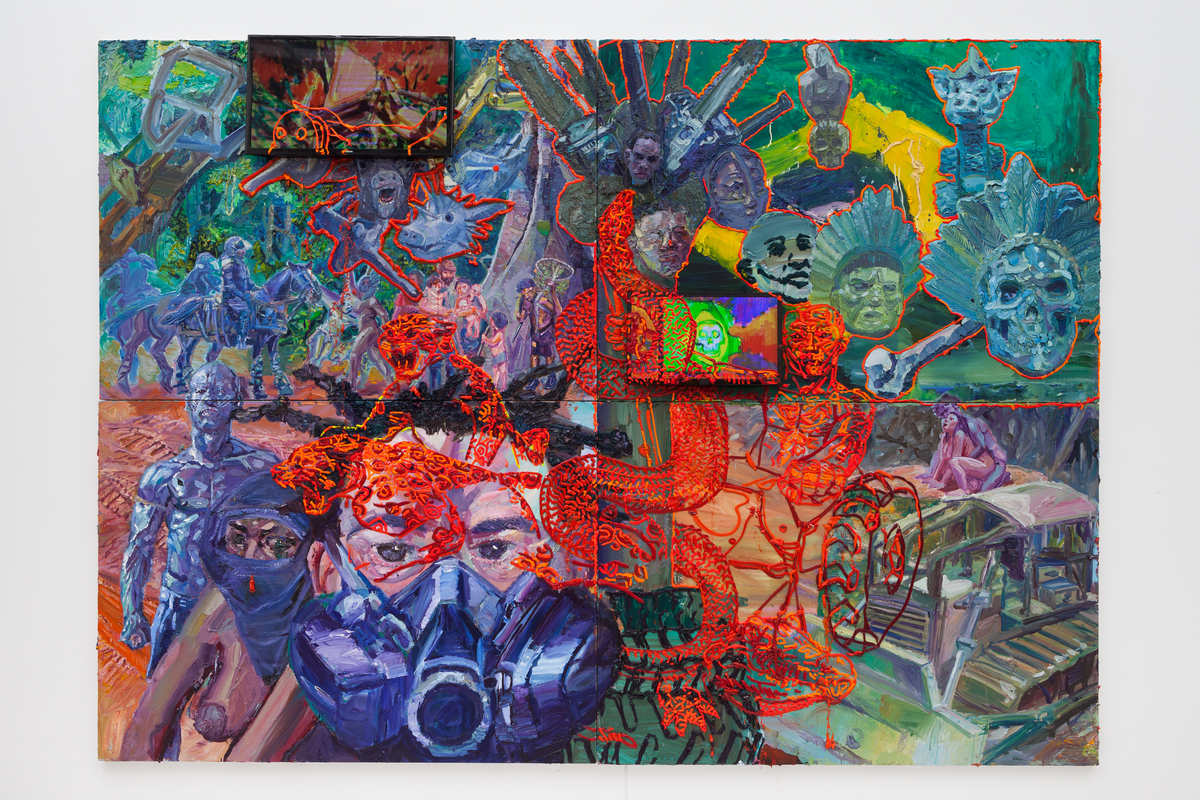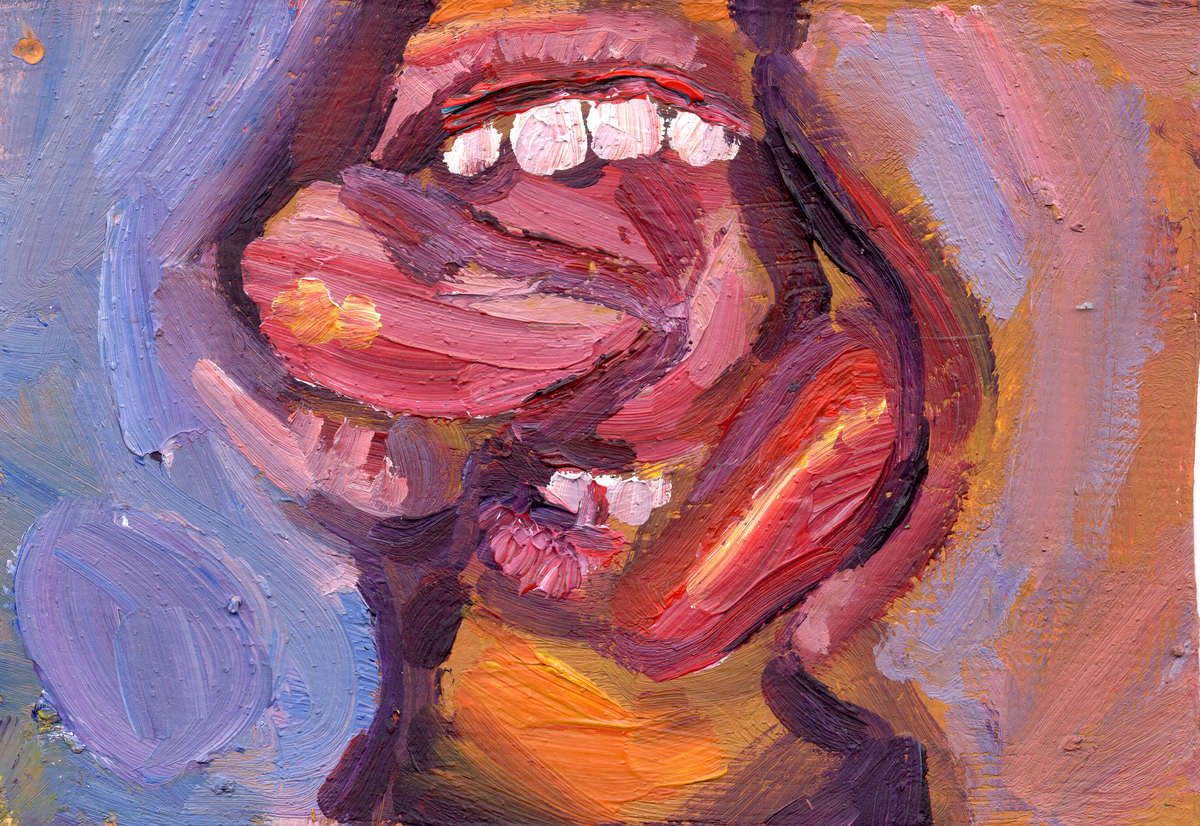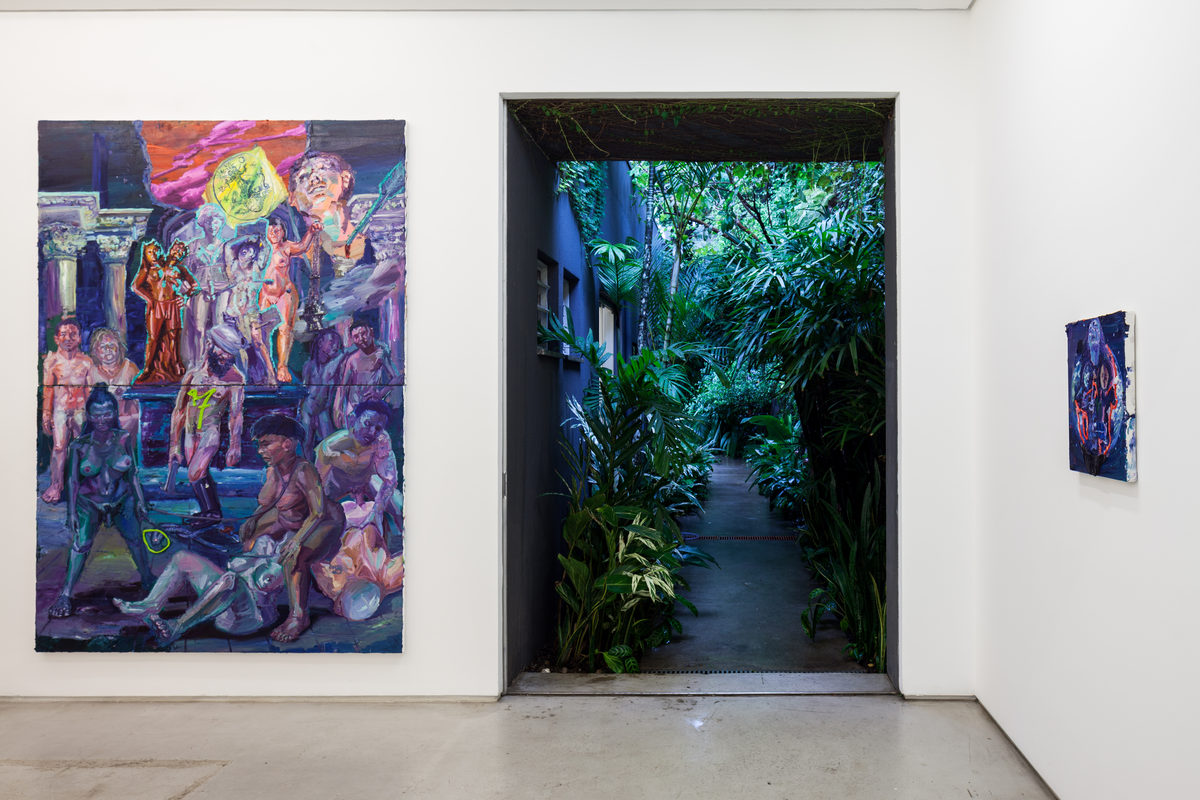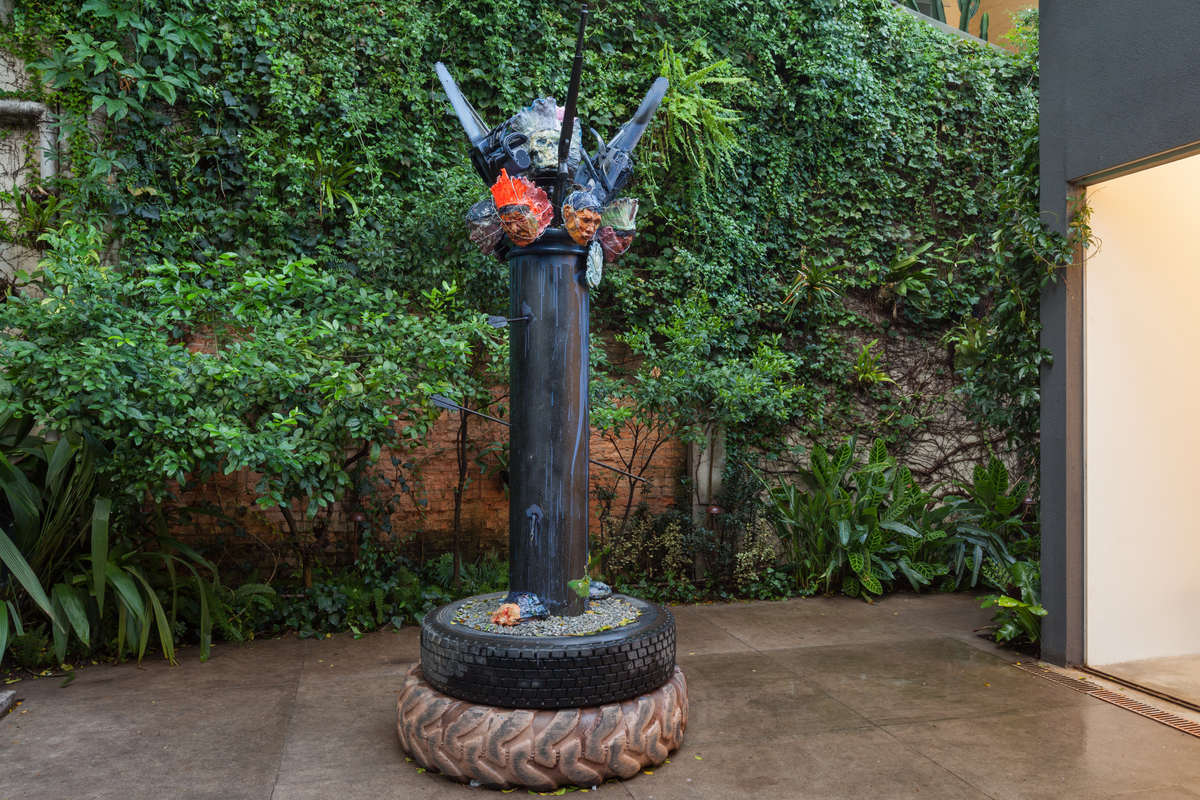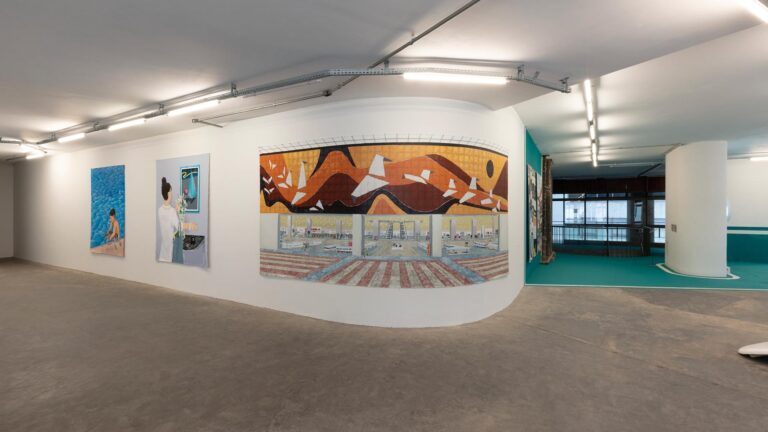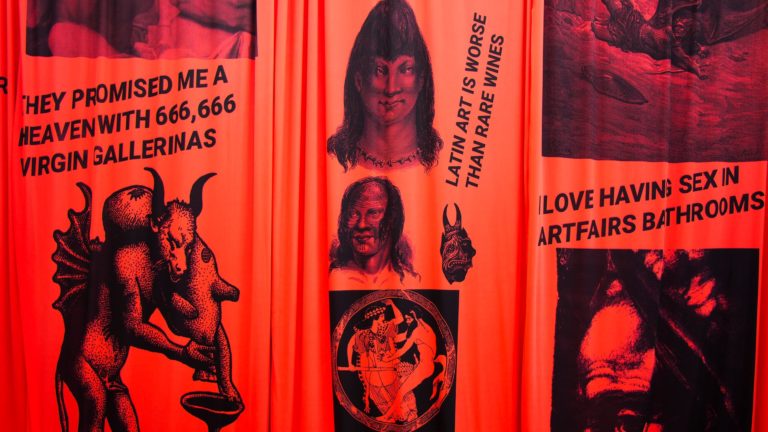Artist: Thiago Martins de Melo
Exhibition title: bárbara balaclava
Venue: Mendes Wood DM, São Paulo, Brazil
Date: February 20 – March 26, 2016
Photography: all images copyright and courtesy of the artist and Mendes Wood DM
When observing Thiago Martins de Melo’s body of work over time, one notices a decantation of various aspects, which now culminates in the series “bárbara balaclava.”
Martins de Melo’s paintings were never actually just two-dimensional. Much like a reading of his work could not be described as strictly retinal. Gradually more material, Martins de Melo has delved deeper into physicality and its ability to reveal meaning in formal pictorial structures and the materiality of their layers, drawing from an array of pictorial techniques of texture to transcend, like one who seeks to breathe life into painting.
“bárbara balaclava” is the sublime result of these formal breaks with the two-dimensional, a demonstration of painting expanded to the three-dimensional, to the image in motion and sound. In the series, Martins de Melo reinforces what the curator and critic Gunnar Kvaran previously identified as his capacity to “reinvent the narrative structure in the world of painting”[1] and, which, beyond this, to reassign meaning, also in content, to the very use and conceptual reach of the traditional terms “anthropophagy” and “cannibalism.”
The works address non-legitimated struggles of peoples and groups viewed as “barbarian,” uncivilized non-citizens. Balaclava is the invisibility, discomfort or aggression caused by the battle mask, which destroys identity, personification and individuation, stores the anonymity of oppressors and the oppressed and, as such, possesses a double meaning. The shirt that covers the face, the iron mask of Anastácia, the mask of the riot squad, of the police… and many other masks worn socially by those who fear institutions as well as those who represent them.
Desire, libido and forms of sexual expression make strong returns in the works, which contain an anthropophagic, ritualistic and transmutative power. Yin yang, animus and anima, androgyny…poetics of the conjunction whose horizon is liberty.
The axis of this exhibition is the film “bárbara balaclava,” which crosses with other works, synthesizing and reinforcing their signs and meanings. The exception is a work which Thiago dedicates to Tiresias[2], Exu Duas Cabeças and Saint Sebastian, addressing questions of gender identity like transsexuality.
[1] Press conference given by Gunnar Kvaran in September of 2008 regarding the selection of artists invited to participate in the Lyon Biennial. Available at http://oglobo.globo.com/cultura/bienal-de-lyon-tera-tres-jovens-artistas-brasileiros-5992952 and http://gazetaweb.globo.com/gazetadealagoas/noticia.php?c=208400
[2] Tiresias Is a character from Greek mythology. A blind prophet or clairvoyant in Thebes, he was known for having been transformed into a woman for seven years.
still from video
still from video
still from video
Thiago Martins de Melo on bárbara balaclava

